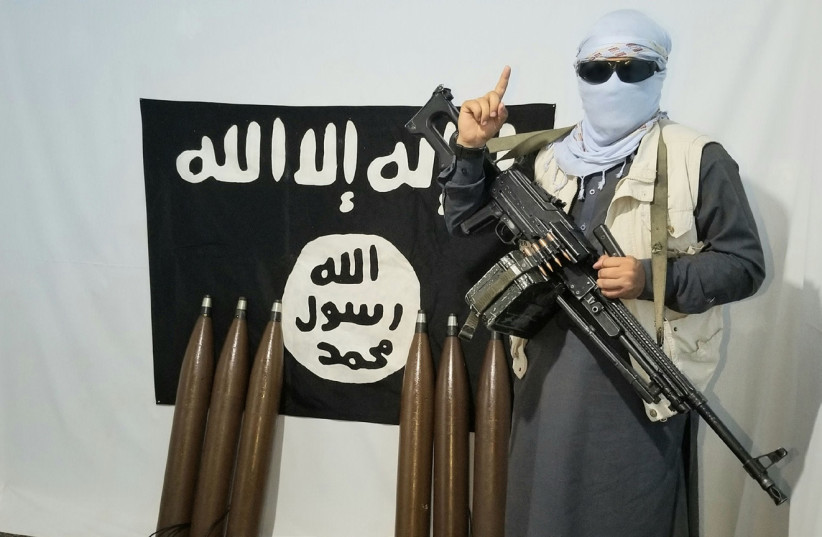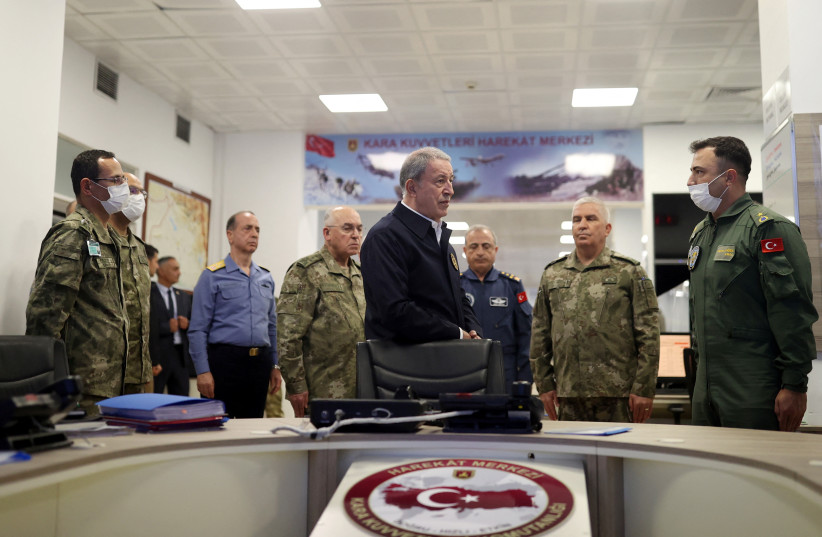The military leader of the key US partner in the war against ISIS in Syria was targeted in an alleged drone strike over the weekend in Sulimaniyeh in northern Iraq. Mazloum Abdi, the leader of the Syrian Democratic Forces, was traveling to the northern Iraqi city. The drone carried out an attack near the airport.
Turkey has operated drones for many years trying to target Kurdish forces in Syria. These forces are key partners of the US-led war against ISIS. While in the past the drones would target SDF members who were near the border with Turkey, this brazen strike took place in Iraq and appears to have been an attempt to show Ankara is targeting the SDF leader.
The most surprising part about the drone strike was that it took place near a convoy of SDF personnel that includes US military personnel. They were traveling in Sulimaniyeh, which is one of the major Kurdish cities in northern Iraq. Sulimaniyeh, sometimes called “Suli” for short, is near the Iranian border.
The city is a center of support for the PUK, one of two Kurdish parties that control the autonomous Kurdistan region in northern Iraq. The other major Kurdish party is the KDP, which is more popular in Erbil and Dohuk. This is important because the KDP generally has closer ties with Turkey and Erbil hosts US forces near the airport. At the same time the US backs the SDF in Syria.
Turkey accuses groups of being linked
Turkey accuses the SDF of being linked to the YPG and PKK, which Turkey views as terrorists. Without getting into all the details, the overall issue here is that while the US has backed the SDF against ISIS, Turkey has continually sought to attack the SDF. This puts Turkey, a member of NATO, in an awkward position of targeting fighters who are working with US forces. Ankara has for years slammed the US for backing “terrorists” and Turkey often works more closely with Russia and Iran.

There is no evidence that the SDF are engaged in any “terrorist” activity, despite Ankara’s accusations.
While it may not be unusual for countries to view different groups differently, the Turkish willingness to use an armed drone to target an SDF leader near an airport in Iraq, where US personnel are traveling in the same convoy as the SDF leader, is unprecedented. According to Rudaw media in northern Iraq, the US Department of Defense Spokesperson Philip Ventura told Rudaw in an email early Saturday that a convoy was struck in Sulaimani city.
“We can confirm there was a strike on a convoy Friday in Sulaymaniyah that included US military personnel. Fortunately, we can also confirm there were no casualties,” Ventura said, adding that an investigation is underway.
The drone attack complicates operations for the US. For many years while the US operated out of Erbil, there was an important connection between Suli and eastern Syria and therefore between the PUK and SDF. It’s worth noting here that KDP has cold relations with the SDF, whereas the PUK has tended to have better ties.
PUK is the smaller of the two Kurdish parties in Iraq, though. Therefore the US has to balance how it works with the SDF, PUK and KDP. The US has backed Kurdish Peshmerga in northern Iraq, the Kurdish defense forces of the autonomous region. The Peshmerga have tended to be affiliated with either the PUK or KDP, even though the US and others have encouraged more unification of the Peshmerga forces.
Turkey, meanwhile has been operating in northern Syria, through invasions of Kurdish regions of Afrin in 2018 and Serekaniyeh in 2019. Turkey also operates in northern Iraq where it is fighting the PKK. This creates a swath of conflict stretching across northern Syria and Iraq.
It also gives Ankara a large area to operate drones. The attack on the Kurdish leader and his convoy is not the first time drone strikes hit Kurdish commanders who are close to US forces. In November 2022 Ankara also carried out an attack on a base used by Kurdish forces in Syria where US soldiers had also been present in the past.
Turkish-facilitated drone strikes
The Turkish drone strike in Iraq shows the lengths Ankara will go to strike Kurdish anti-ISIS fighters. Ankara’s goal is likely to try to eliminate some of these Kurdish leaders prior to the May election in Turkey. Turkey’s ruling AKP party has made fighting “terrorists” a key part of its platform, even though there have been no major terrorist threats to Turkey.
Ankara wants also to try to weaken the SDF as part of a deal between Russia, Iran, and the Syrian regime. Russia wants Turkey and the Syrian regime to reconcile. The Syrian regime wants Turkey to leave northern Syria. Turkey would likely only leave northern Syria if it thinks the SDF is defeated and the US has left Syria at the same time.
This means that Ankara’s drone strike is part of a process of sending a message to the US to put pressure on the US to leave. Ankara has now extended this pressure to Iraq. Turkey carried out the strike in Suli only after it had closed Turkish airspace to any flights from Suli. Basically, Ankara wants to isolate the PUK and Sulimaniyeh.

Ankara is likely working with Iran on this issue as well. Iran has had close ties with the PUK in the past. Iran, however, wants to curtail protests in Iran, especially protests in the Kurdish areas of northwestern Iran. Iran has also carried out attacks in Iraq against Kurdish dissidents. Iranian media last week ran an article condemning the Kurdish group PJAK.
PJAK is considered close to the PKK. Form Iran and Turkey’s perspectives therefore they are now on the same side against “PKK terrorism” and Ankara’s drone strike in Suli may show that Turkey is serious about operating in Iran’s backyard, even if it endangers US forces.
Iran will be pleased to see the US endangered and will admire Ankara’s brazenness in this regard. For the Kurdish fighters, this is bad news because it means they are now increasingly seen as pawns to be targeted by strikes, rather than a major group with a seat at the table.
